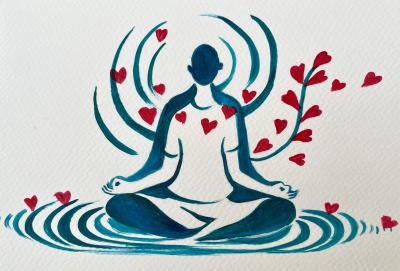New Forms Of Religion


However much the great ship of religion may be sinking, we remain spiritual in our needs and aspirations. If we see that religion has a fleet rather than a single battleship, we can see how certain types of old time religion are being taken out of service but other religious forms are under construction. This generation spans the transition. Although we suffer the insecurity of such times we also enjoy the excitement of seeing the new take shape and also the responsibility for contributing to the direction in which we are moving.
We still seek wholeness. It is intrinsic to human identity that, however much we have achieved, we are never satisfied. We hunger and thirst for what lies beyond our grasp and even beyond the horizon of our desire. Religion and spirituality, which are less easy to divorce than we thought — are the elements of culture that deal with this desire beyond desire. Where are they taking us? Where do we have to redefine the old terms by which we try to understand ourselves in this longing for wholeness?
Does secular, for example, always mean faith-less?
The melancholy and self-inflicted wounds of conventional religion and the dramatic, scary rise of fundamentalist religion catch the headlines; but there is also another and, I will suggest here, a more significant kind of religion taking shape around us. This is the resurgence on an unprecedented scale of the contemplative dimension — indeed the heart — of religion. It has always been there, usually marginalized, sometimes persecuted and has regularly surged in certain periods to challenge the sclerosis and cleanse the arteries of religion. The Sufis of Islam or the mystics of Christianity speak to their spiritual descendants today as if they are our contemporaries. Indeed, in a sense they are. Although we have to adjust to their historically conditioned language and thought, the essence of what they have left us has not passed its use-by date. This is not surprising as what they are concerned with and communicate to us is the timeless.
The inner Light is beyond praise and blame; like space, it knows no boundaries, yet it is even here, within us, ever retaining its serenity and fullness. It is only when you hunt for it that you lose it. You cannot take hold of it, but equally, you cannot get rid of it." (Yung-Chia-Ta-Shih, 7th century)
Today, as traditional forms of institutional religion mutate — this change cannot be measured only by attendance at places of worship — spirituality expands exponentially. This indicates an intensified quest for a form of religious consciousness that arises from and relates to personal concerns and our day-to-day lives. We yearn for a religious experience arising from the indwelling truth of our most real selves. Yet we know intuitively that this inner experience must be connected to and be of benefit to others and to all aspects of our own humanity. If the experience remains self-fixated it degenerates. In the same way eros that does not, at the right moment expand into agape, slowly dies or becomes violent. The 'spiritual' that is not moving into other-centredness and a more inclusive love is just fashion. Through the rise of authentic spirituality, new forms of a less dogmatic, rigid and ritualistic religion are forming. Along with interior experience, self-awareness and transformation we yearn for connection with others even as we enter upon this most solitary of levels. A spirituality that does not form some kind of community remains superficial.
The marriage of contemplation and action which is at the heart of any living faith is manifesting in many new forms of religion today.
Laurence Freeman has been a Benedictine monk for 40+ years. The excerpt above from his book First Sight.
SEED QUESTIONS FOR REFLECTION: How do you relate to the notion that inner experience must be connected to and be of benefit to others or else it degenerates? Can you share a personal story of a time contemplation and action came together for you? What helps you feed your longing for wholeness?
Add Your Reflection
15 Past Reflections

On Oct 17, 2023 Ron wrote :
Post Your Reply

On Oct 4, 2023 Laura Shaw wrote :
Post Your Reply

On Oct 3, 2023 Stream wrote :
1 reply: David | Post Your Reply

On Oct 3, 2023 Walther DREHER wrote :
Post Your Reply

On Oct 3, 2023 Uday Gosalia wrote :
Post Your Reply

On Oct 3, 2023 David Barszewski wrote :
Post Your Reply

On Oct 1, 2023 Hareshwar Singh wrote :
Post Your Reply

On Sep 29, 2023 Mariette wrote :
1 reply: Aj | Post Your Reply

On Sep 29, 2023 David Doane wrote :
Post Your Reply
